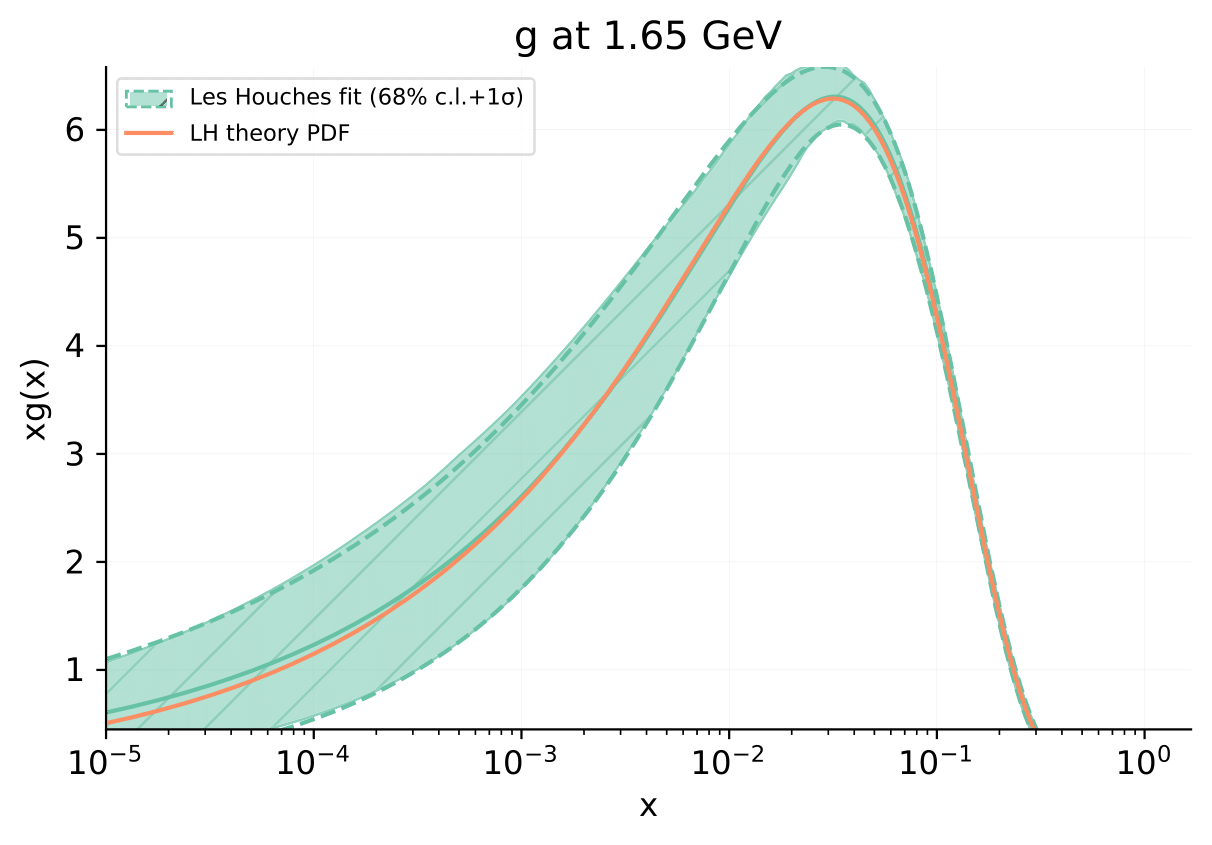Your First Colibri Fit
In this section, we will guide you through the steps to run a fit with a PDF model that is already implemented and readily available within Colibri.
For this exercise, we will be running a Level 0 closure test with the Les Houches parametrisation model, which was implemented in this tutorial.
Make sure you have installed the code first!
Step 1: enable the executable
To run this fit, you will need to be in the right directory:
cd colibri/colibri/examples/les_houches_examples/
You will see that, in this directory, there is a pyproject.py script.
This is the script that will allow you to enable the executable for this
example, by running the following command in your colibri-dev conda
environment:
pip install -e .
You now have access to an executable called les_houches_exe, that you
will use to run Les Houches fits.
Step 2: running the closure test
In the colibri/examples/les_houches_example/runcards directory you will find
an example runcard called lh_fit_closure_test.yaml. You can find a detailed
discussion on this runcard on the
tutorial on how to run closure tests. For now, you can
simply run this runcard with the following command:
les_houches_exe lh_fit_closure_test.yaml
This step will download the PDF grid LH_PARAM_20250519.
If you don’t have it already, it will also download the theory 40000000.
After you run the fit the first time, any subsequent fits should be faster.
A directory called lh_fit_closure_test, containing the output of the fit,
should have been created. You can read more about the fit folders
here.
Step 3: Evolving the fit
If you don’t already have it, you will need to download the EKO corresponding to the theory used in this tutorial [CHM22a, CHM22b]:
vp-get EKO 40000000
You can then evolve the fit by running the following command from the
les_houches_example directory:
evolve_fit lh_fit_closure_test
You can read more on fit evolution in this section.
Step 4: Generating a validphys report
Finally, you can run:
validphys plot_pdf_fits.yaml
to generate a validphys report [ZCw+25].
The result
As an example, we show the result of the fit for the gluon PDF.

The orange line, labelled LH theory PDF, shows the gluon PDF used to generate the pseudo-data, i.e. the underlying law we are trying to recover. As mentioned above, this was computed using the best-fit values for each parameter, as presented in Ref. A+05. The green curve/section, labelled Les Houches fit 68% c.i. + 1\(\sigma\), shows the result of the closure test fit with error band.